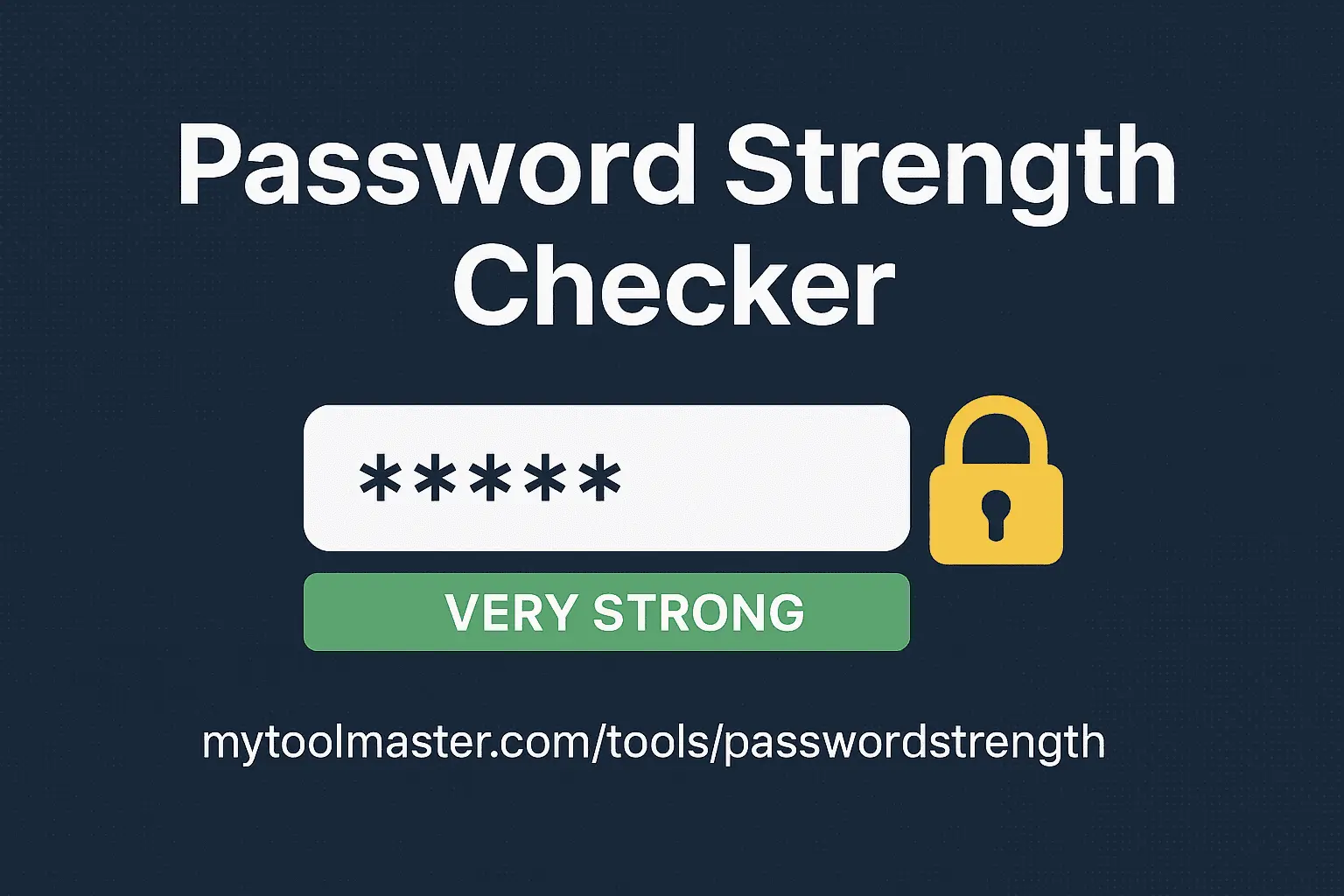The Ultimate Guide to Password Strength Checkers & How to Create Stronger Passwords

The Ultimate Guide to Password Strength Checkers & How to Create Stronger Passwords
Passwords are the keys to our digital lives. From social media and email accounts to banking apps and cloud storage, everything we value is secured behind a password. Yet, weak passwords remain one of the leading causes of data breaches. According to cybersecurity reports, more than 80% of hacking-related breaches are due to stolen or weak passwords.
This is where a Password Strength Checker becomes an essential tool. It not only helps you evaluate how secure your password is but also educates you about what makes a password strong. In this guide, we’ll dive deep into password security, how strength checkers work, and how you can create unbreakable passwords that safeguard your digital identity.
What is a Password Strength Checker?
A password strength checker is an online tool that analyzes the quality of a password based on multiple factors, including:
- Length: Longer passwords are harder to crack.
- Character Variety: Strong passwords include a mix of uppercase, lowercase, numbers, and special characters.
- Predictability: Common words, sequences (123456), or keyboard patterns (qwerty) are easily guessed.
- Dictionary Attacks: If your password contains common dictionary words, it’s more vulnerable.
Our free tool Password Strength Checker gives you instant feedback and a strength rating for any password you test.
Why Weak Passwords Are Dangerous
Weak or reused passwords are the easiest way for hackers to gain access to your accounts. Cybercriminals use automated tools that can test billions of combinations in seconds. Some common attacks include:
- Brute Force Attacks – Trying every possible combination until the right one is found.
- Dictionary Attacks – Using a database of common words and leaked passwords.
- Credential Stuffing – Reusing stolen username/password combos from previous breaches.
- Social Engineering – Guessing passwords based on personal info like birthdays or pet names.
By using weak passwords, you’re essentially leaving the front door to your digital life unlocked.
How Password Strength Checkers Work
A good password strength checker doesn’t just count characters; it applies advanced rules to analyze:
- Entropy (Randomness) – A measure of unpredictability. The higher the entropy, the harder it is to crack.
- Pattern Detection – Identifies sequences (e.g., "123456"), repeated characters, or common substitutions (e.g., "P@ssw0rd").
- Blacklist Checking – Compares your password against a database of known weak or compromised passwords.
- Estimated Crack Time – Many checkers estimate how long it would take for an attacker to guess your password using brute force.
For example, a password like password123 can be cracked in less than a second, while a random 16-character password like x!A9@cP2%tF6#jLw might take trillions of years with current technology.
Characteristics of a Strong Password
When creating a password, keep these golden rules in mind:
- Length Matters Most – Aim for at least 12–16 characters.
- Mix Character Types – Use uppercase, lowercase, numbers, and symbols.
- Avoid Predictability – Don’t use birthdays, pet names, or "123456".
- Unique for Every Account – Never reuse passwords across multiple platforms.
- Avoid Dictionary Words – Simple words can be cracked in seconds.
Tips to Create and Remember Strong Passwords
One of the biggest complaints about strong passwords is that they are difficult to remember. Here are some tips:
- Use Passphrases – Combine random, unrelated words into a long phrase. Example:
BlueTiger$Mountain2025!. - Substitution – Replace letters with symbols or numbers (
e→3,a→@). - Password Managers – Tools like LastPass, 1Password, or Bitwarden generate and store secure passwords for you.
- Two-Factor Authentication (2FA) – Always enable 2FA for extra protection, even if your password is strong.
How Hackers Crack Passwords (Real Examples)
- The infamous password "123456" was used by over 23 million people according to a major breach report. It can be cracked instantly.
- Short passwords like "letmein" or "welcome1" are among the first tried by attackers.
- Even "P@ssw0rd!" may seem strong at a glance, but it’s one of the most common weak passwords.
By using a checker, you can instantly spot if your password falls into one of these categories.
Using Our Free Password Strength Checker
We’ve built an easy-to-use tool that helps you test your passwords:
How to use it:
- Enter your password into the tool.
- Get instant feedback on strength, crack time, and potential weaknesses.
- Learn how to improve it with suggestions.
Unlike some tools, our checker doesn’t store or transmit your password. The evaluation is done in real-time in your browser, ensuring privacy.
Beyond Passwords: Better Security Practices
While strong passwords are essential, modern security requires a layered approach:
- Enable 2FA or MFA (Multi-Factor Authentication) – Adds an extra layer beyond your password.
- Use a Password Manager – Securely store hundreds of unique passwords.
- Update Regularly – Change important passwords every 6–12 months.
- Check for Leaks – Use services like Have I Been Pwned to see if your credentials are exposed.
Conclusion: Password Strength Matters
Your password is the first line of defense against hackers. A weak password can be cracked in seconds, while a strong one can withstand attacks for centuries.
By using a Password Strength Checker, you can instantly see if your password is secure or if it needs improvement. Pair that with smart habits—like using password managers and enabling 2FA—and you’ll be far ahead of most users when it comes to protecting your digital identity.
Take action today: test your current passwords and start upgrading your security. The small effort you put in now could save you from massive headaches later.